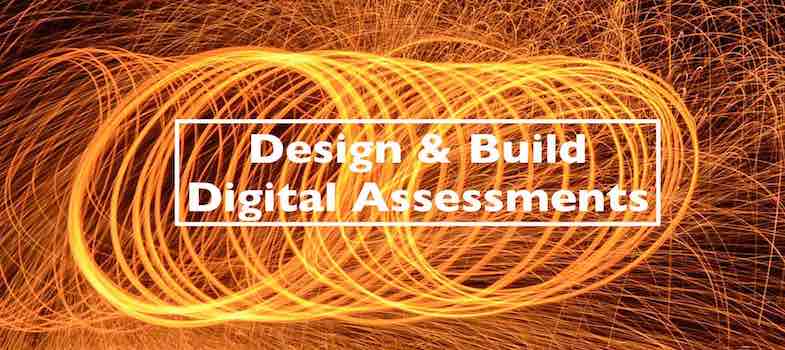1. Getting Started: Readings
6. What is e-assessment?
Working with teaching staff in the project we have been struck by the range of misconceptions that exist around the term ‘e-assessment’, often it is assumed that it must mean some kind of automated testing – usually some form of Multiple Choice Questions (MCQs). But really it is a much more inclusive and general term than that and in a section below we provide a handy conceptual model (the e-assessment ‘continuum’) to help you think about where you and your organisation might be in terms of adopting e-assessment. Part of the problem with terminology in this area, and with e-learning more widely, is that it is heavily laden with commercially driven hype [1] to persuade people of the benefits of adopting (i.e. buying) technology – often with little or no evidence to back it up. We shall be ‘hype busting’ as we go along in this guide to clear the way forwards to enable more effective practice and, crucially, to widen our perspectives to enable more creative thinking.
Some Examples of e-Assessment
So, e-Assessment generally refers to the use of technology to deliver and manage assessment. It can be (and often is) very diverse due to a host of differing contextual factors such as access to the internet, location, situation of students, staff skills, college infrastructure, and money (of course!). Below we list just a few of the possibilities to help widen our view of what constitutes e-assessment:
It can be used with a wide range of learning models such as campus-based, ‘blended’ i.e. a mixture of face to face and self-directed learning with technology, or a fully distance model of learning - to deliver diagnostic, formative and summative assessments.
Assessments can include submitting an essay or assignment online via a VLE (Virtual Learning Environment), or even via email.
It can be an online MCQ test where students access the test and upload their answers to a pre-programmed ‘marking engine’
Assessments may take the form of self & peer assessment exercise, enabled by a specific technology (VLE, email, Twitter, Facebook etc.), in which students are required to assess each other's work on the basis of given criteria. e-Assessment can be used across a range of subjects and it is very popular in engineering, science, medical sciences and language disciplines.
In its broadest sense, e-assessment is the use of information technology for any assessment-related activity and from this perspective MCQs are just a subset of many differing options. It can be used to assess both cognitive and practical abilities e.g. ‘explaining’ (cognitive); such as a concept or method in graphic design or ‘choosing and using’ (practical); the right tool to produce a desired result in graphic design.
Using e-Portfolios for Assessment
A recent and important development in e-assessment has been the emergence of the e-portfolio. This uses technology to support and update the very old (and valuable) practice of students assembling a portfolio of their own work to provide tangible evidence of their achievements and to present for assessment. It is common in art education for instance, but can be applied across all disciplines and is very useful in supporting job applications and showing evidence of continuing professional development.
The essential difference between an e-Portfolio and a Virtual Learning Environment VLE is that the former is owned and controlled by the student while the latter is owned and controlled by the teacher. So, the e-Portfolio is a student-centred and controlled online space where the student can invite teachers (and other students) in to view content that they have created. In contrast, the VLE is a teacher-centric and college controlled space where students and teachers come together to undertake programmes of learning.
[1]http://www.gartner.com/technology/research/methodologies/hype-cycle.jsp↩
